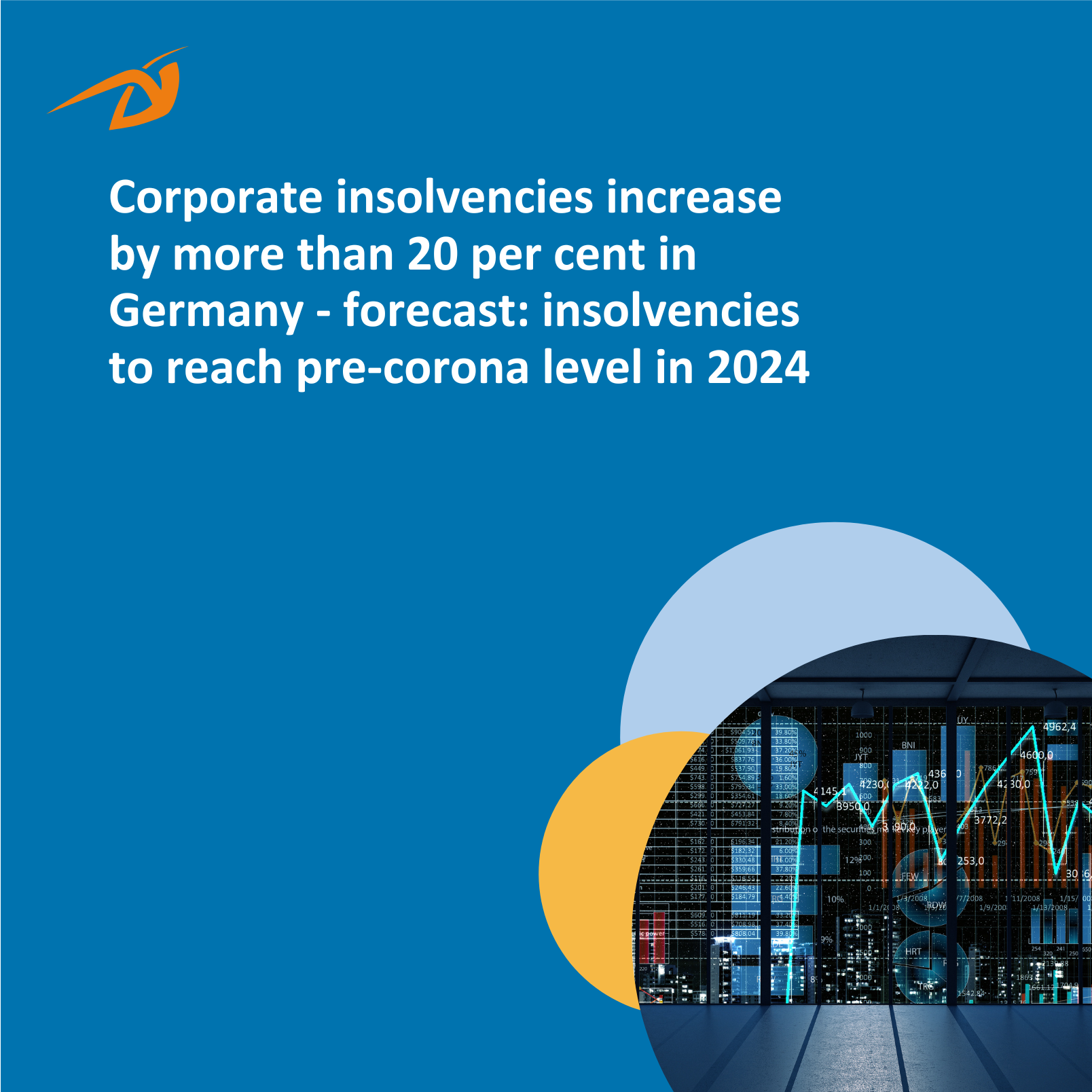-
Corporate insolvencies increase by more than 20 per cent in Germany - forecast: insolvencies to reach pre-corona level in 2024
Read MoreLast year, 17,847 companies filed for insolvency in Germany. This represents a 22.4 per cent increase in company insolvencies...
-
CRIF and Anonos Join Forces to Deliver Responsible AI Solutions Through Privacy-Preserving Synthetic Data in the Age of Generative AI
Read MoreNew York City and Bologna, May 23, 2023 - CRIF and Anonos - an innovator in enterprise data privacy, security and enablement,...
-
Corporate insolvencies rise by 4.2 percent in Germany - moderate increase in corporate bankruptcies forecast for 2023
Read MoreDuring the last year, 14,578 companies filed for insolvency in Germany. This represents an increase of 4.2 percent in corporate...
-
New Supply Chain Act since January: Synesgy platform makes collecting relevant information from suppliers particularly easy
Read MoreSupply chain due diligence act (LkSG) will become a data and IT challenge for many companies - more than 3,600 companies will be...
The basis effect ensures a significant drop in private insolvencies - forecast for the year is 95,000 private insolvencies
Private insolvencies in Germany fell significantly in the first three months of the year. There were a total of 22,166 private insolvencies in the 1st quarter. This corresponds to a decrease of 30.3 percent compared with the same period last year (Q1 2021: 31,821). These are the key findings from the latest CRIF "Debt Barometer 1st Quarter 2022".
The strong increase in insolvencies last year has thus currently reversed. The significant increase in private insolvencies from 2021 was mainly due to the fact that many private individuals withheld corresponding insolvency applications in 2020. The individuals concerned wanted to benefit from a legal reform and take advantage of the announced reduction in the duration of the proceedings from six to three years and consequently did not file until 2021. The law to further shorten the residual debt discharge proceedings came into force at the beginning of 2021 and those affected can now be debt-free after just three years instead of six. This is intended to make it easier for debtors to get back on their feet more quickly. This special feature led to a particularly sharp rise in private insolvencies in 2021. Consequently, the base value (1st quarter 2021) is also exceptionally high and the corresponding percentage change in the 1st quarter 2022 is distorted at minus 30.3 percent. Compared with the first quarter of 2020 (figures excluding legislative reform), personal insolvencies rose by 9 percent in the first three months (Q1 2020: 20,328). And private insolvencies in the 1st quarter of 2019 were also below the level of 2022, at 21,490 cases.
"The current strong variations in personal insolvencies are mainly due to two particular effects. In 2021, the catch-up effect triggered by the legislative reform to shorten residual debt discharge caused private insolvencies to rise sharply. In Q1 2022, this is now providing a base effect. The base level of insolvencies was exceptionally high in the first three months of last year. Therefore, the rates of change are currently distorted," explains CRIF Germany Managing Director Dr. Frank Schlein the current figures.
The financial situation of many private individuals in Germany remains strained, above all due to steadily rising rent and energy prices. People in Germany will have less money in their pockets to meet their obligations such as loan payments, rents or financing. In the long run, less income leads first to over-indebtedness and then possibly to private insolvency. People who file for personal insolvency do not necessarily have to be heavily in debt. A large proportion of those affected have total debts of less than €10,000. The average debt is just under €19,000. As the Federal Statistical Office recently published, just under 575,000 people took advantage of the help of a debt counseling center in 2021[1]. "We expect private insolvency figures to remain high in 2022. Currently, we expect up to 95,000 consumer insolvencies this year."
The trend of rising private insolvency figures is already evident from January to March 2022. While there were 6,777 private insolvencies in January, the number rose by almost 20 percent to 8,151 cases in March.
Private insolvencies by federal state: Most private insolvencies in Bremen, Lower Saxony and Hamburg
Nationwide, there were 27 private insolvencies per 100,000 inhabitants in the first three months of the year. The northern states are more affected by private insolvencies than the south of Germany. Bremen, for example, leads the statistics with 50 private insolvencies per 100,000 inhabitants. It is followed by Lower Saxony with 39 and Hamburg with 37 insolvencies per 100,000 inhabitants. Also above the national average are the states of Schleswig-Holstein (36), North Rhine-Westphalia and Mecklenburg-Western Pomerania (30 each), and Saxony and Saarland (28 each). Bavaria (16 cases per 100,000 inhabitants), Baden-Württemberg (20) and Thuringia (22) recorded the fewest private insolvencies. In absolute terms, the states of North Rhine-Westphalia (5,401), Lower Saxony (3,131) and Baden-Württemberg (2,202) lead the insolvency statistics.
Percentage changes: Base effect causes case numbers to fall in all federal states
In all federal states, private insolvencies decreased in Q1 2022 compared with the previous year. Saarland reported the sharpest decline, with 43 percent fewer private insolvencies. There were also significant decreases in Bavaria (minus 39.3) and Baden-Württemberg (minus 36.7 percent).
[1] https://www.destatis.de/DE/Presse/Pressemitteilungen/2022/05/PD22_217_63511.html





